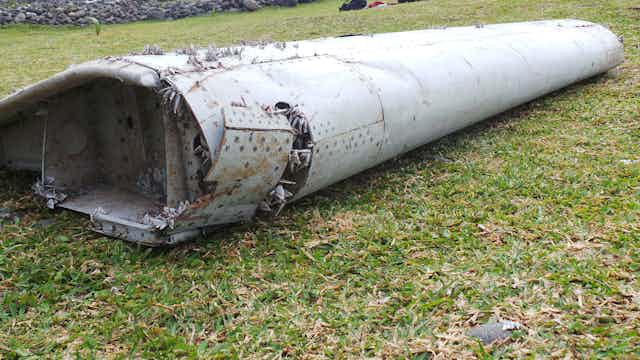There is much hope that the piece of an aircraft wing washed up on Reunion Island is from the missing Malaysia Airlines flight MH370, which disappeared in March last year.
The MH370 Boeing 777 was initially on a flight from Kuala Lumpur to Beijing when it disappeared. It was later thought to have changed course with the search operation moved to the Indian Ocean off the west Australian coast. But after almost 17 months of searching, there had been no sign of any of the aircraft or the 239 passengers and crew.
So the discovery this week of a piece of aircraft wing on an island off Madagascar could be the first clue to what may have happened to the aircraft. Ocean experts have already said it is possible that the debris could have moved from seas off Western Australia to the island, based on knowledge of the Indian Ocean currents.
MH370 is the only known Boeing 777 to be missing, although other accidents involving Boeing aircraft have been mentioned as possible sources of the debris.
The debris is being sent to France for analysis. There are some part numbers on the item, such as 657 BB, which Malaysia’s deputy transport minister Abdul Aziz Kaprawi said confirms the debris is from a Boeing 777.
Boeing will have very accurate records of all the materials used in the construction of each aircraft, including the metal components and paint.
The results of forensic analysis of the metals and paints on the wreckage can be compared to those specifications to determine beyond doubt whether it’s from MH370.
Examining the debris
The debris found on Reunion Island certainly looks like it has been in the water for some time given the amount of barnacles and other sea life attached.
Nonetheless, much can be determined by careful examination of the wreckage. For example, the nature of the structural failures can shed light on the forces that would have been exerted in order for this section to have broken away as it did.
This will give some indication of what effect that same type of load might have caused to other parts of the aircraft structure which will start to inform modelling of the possible break up sequences. This could provide searchers with the first clues as to what they are looking for.
In other words, are they looking for wreckage that is in lots of little pieces, where the engines might be among the biggest parts, or is there likely to be large fuselage sections and wing sections likely to be still intact.
Inspection of the wreckage may exhibit other evidence of how the aircraft broke up. Analysis of the stresses on the surfaces, for instance, may provide some clues on the nature of the overloads and bending moments. Impact marks or other deformations in the structure might also provide clues to the configuration and attitude of the aircraft at impact with the water.
It might also start to provide clues as to whether the aircraft broke up in flight or on impact with the water. This may also help inform modelling of what the nature of the wreckage and the size of the debris field might be.
Location, location, location
Of course, if this wreckage is from MH370, this is the first validation of assumptions and modelling more than 12 months ago that suggested the aircraft had turned back across the Malaysian peninsular and crashed somewhere in the Southern Indian Ocean. It would validate that the intermittent primary radar returns detected by the military radars were from MH370.
This section of the aircraft clearly stayed afloat since the crash as it had air trapped within its structure. It seems reasonable that there should be others.
Many parts of the aircraft are manufactured from honeycomb structured materials which are very strong, very light and have many pockets of trapped air. Accordingly, some wing fairings and panels, and flying surfaces such as the rudder and horizontal stabilisers may also be expected to float.
It will be very interesting to see what other debris comes ashore in the coming weeks. Every piece recovered and analysed will shed more light on what happened to MH370 and help inform the search.
The Joint Agency Coordination Centre which is looking after the search for MH370 issued a statement late July saying up 55,000 square kilometres of a potential 120,000 square kilometres of the seabed off WA has so far been searched.

One of the search vessels, Fugro Discovery, was due to arrive in the port at Fremantle this weekend for resupply before heading back out about August 12. The other vessel, Fugro Equator, is continuing the search in the southern Indian Ocean.
If they can ever locate the data recorders from MH370 that would go a long way to solving the mystery of what happened to the flight. But if they can’t find the recorders, then investigators would have to rely on what other debris that might come ashore in the coming weeks.
No doubt searchers will be heartened by this find if it is proven to be a part of MH370. Many of the assumptions and modelling decisions have been validated, at least in part. They are searching in the right ocean.
But as the search moves closer to the point where the entire designated search area has been fully investigated, if the aircraft wreckage has still not been found, where to then?
Do you assume that the modelling is accurate and go back for another look, maybe using different techniques and technology, or do you look elsewhere? If so, where? The nature and location of any wreckage found in the coming weeks might help inform that decision.

